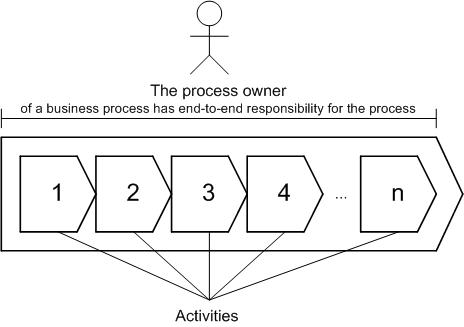A business process needs to have a process owner who has end to end responsibility for the process (Osterloh and Frost, 2006; Suter, 2009).

Process owner of a business process
The existence of process owners is the most visible difference between a process enterprise and a traditional organization. Moreover, process ownership needs to be a permanent role (Hammer and Stanton, 1999). A process owner does not only need to have process knowledge, but also leadership experience (Schmelzer and Sesselmann, 2006).
“The process owner must have the authority to take all measures necessary to coordinate and improve the business process.” (Hinterhuber, 1995)
Process owners should have enough power in the organization to act for the interests of the process. An interesting example of the power of process owners is given by Schmelzer and Sesselmann (2006). In their book, they describe the process owner role at Texas Instruments Europe, stating that process owners in this company are members of the European strategic leadership team. Thereby a tight connection between business processes and business strategy is ensured.
An important task of a process owner is the continuous and proactive improvement and optimization of the business process for which the owner is responsible for.